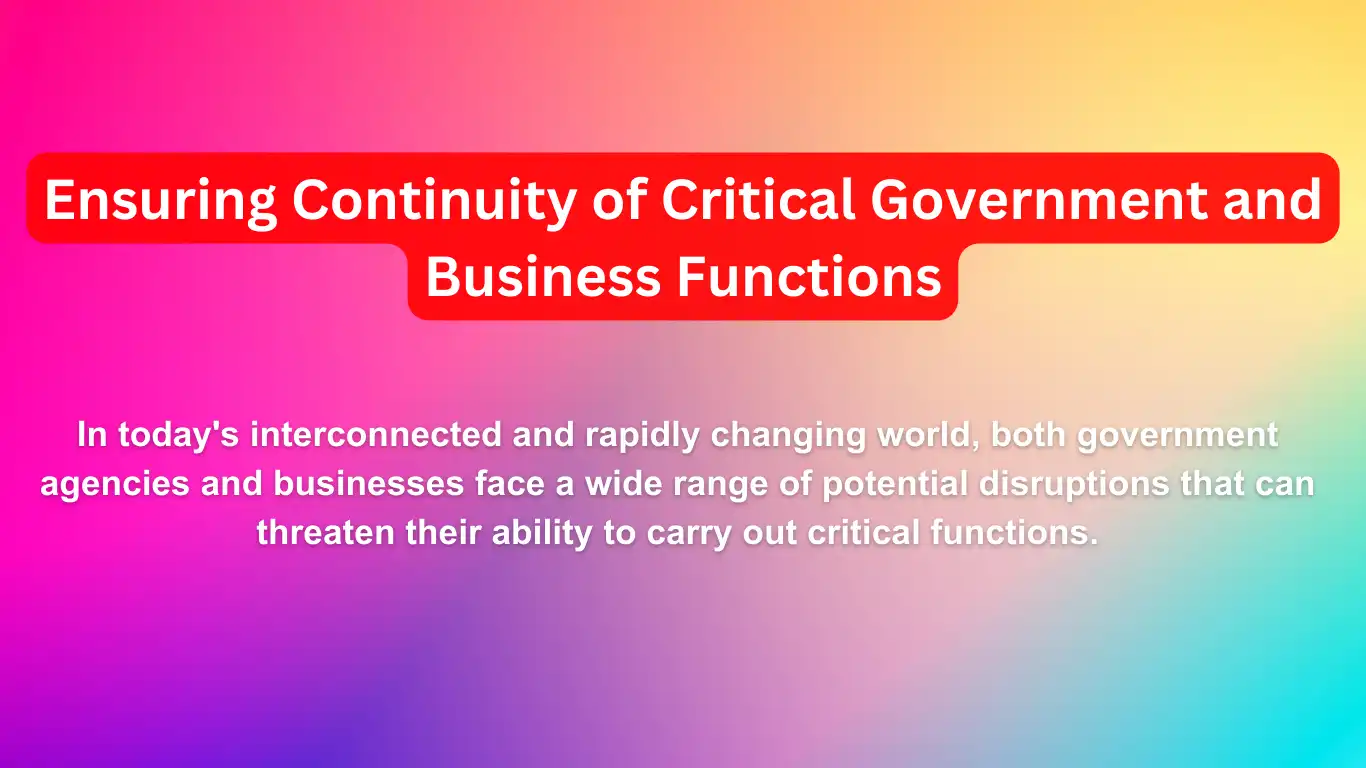
[box type=”info” align=”” class=”” width=””]What is Defined as Enabling The Continuous Operation of Critical Government and Business Functions?[/box]
In today’s interconnected and rapidly changing world, both government agencies and businesses face a wide range of potential disruptions that can threaten their ability to carry out critical functions. From natural disasters and pandemics to cyber-attacks and infrastructure failures, organizations need to have strategies and systems in place to ensure the continuity of essential operations even in the face of major challenges. This article will explore what is required to enable the continuous operation of critical government and business functions.
[box type=”note” align=”” class=”” width=””]We are write more interesting article on the website “Business News Tips“[/box]
Key Elements of Ensuring Continuity:
- Business Continuity Planning (BCP): A comprehensive BCP identifies an organization’s critical functions, assesses risks and potential impacts of disruptions, and documents policies, procedures and resources required to maintain or quickly resume essential operations. The BCP should be regularly updated and tested.
- Resilient IT Systems and Data Backups: Robust, secure, and redundant IT infrastructure is crucial for maintaining access to vital data, applications, and communications channels during disruptive events. Regular data backups stored off-site enable the restoration of critical information if primary systems go down. Cloud-based systems can provide geo-redundancy.
- Alternative Work Arrangements: The ability for employees to work remotely is key to continuing operations if facilities become inaccessible. This requires provisioning secure remote access, collaboration tools, and adequate bandwidth. Cross-training staff also builds resiliency.
- Incident Response Plans: Documented procedures for responding to specific disruptive scenarios enable swift and coordinated action to address issues and maintain/resume critical functions. This includes communication protocols for internal and external stakeholders.
- Third-Party Risk Management: Since most organizations rely on external vendors and partners, it’s important that business continuity requirements are extended to critical third parties. Supplier outages can disrupt the supply chain and availability of key inputs.
- Regulatory Compliance: Industry regulations, such as those in financial services and healthcare, often mandate certain business continuity capabilities. Compliance is essential to meet legal obligations and satisfy key stakeholders.
- Testing and Continuous Improvement: Regular testing of business continuity plans and procedures, ideally in the form of simulated disruptive events, is vital to find and rectify gaps. Incorporating lessons learned drives ongoing improvement. Annual updates keep plans current.
Conclusion:
Uninterrupted delivery of critical government and business functions is essential for public wellbeing, economic stability and organizational survival. A robust business continuity capability composed of thorough planning, resilient systems, alternative work arrangements, incident response procedures, third-party risk management, regulatory compliance, and continuous testing and improvement is required to achieve this. Proactively implementing these elements provides the best assurance for weathering inevitable disruptions.







